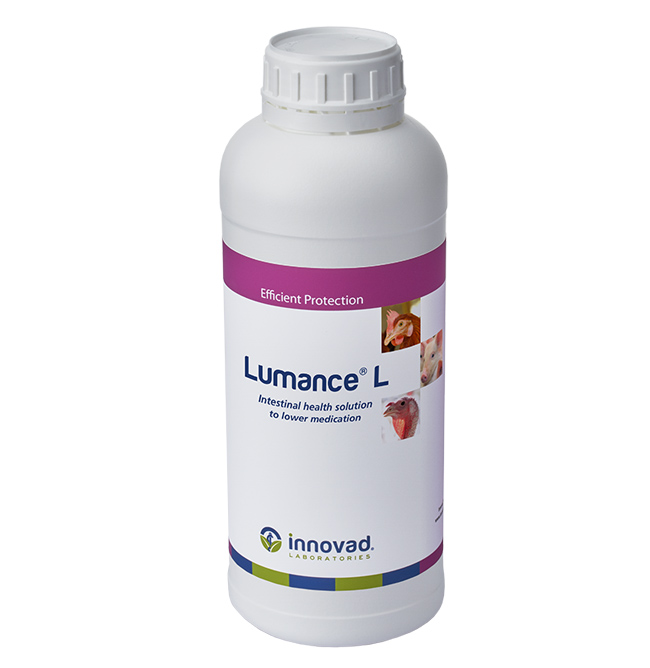Lumance® L
Intestinal health solution to lower medication and improve performance
A healthy herd
Intestinal health is the most determining factor for pig and poultry health in general, herd performance and eventually farm profitability. Harmful bacteria such as E.coli may colonize in the gastrointestinal tract, resulting in clinical and sub-clinical diseases. Reduced feed intake and daily gain, inactivity and decreased social interactions are all observed in animals with bacterial infections.
Modes of action
1. Reinforce gut integrity
The area of the intestinal wall carries an important responsibility in selecting what can be absorbed and what should remain outside the body of the animal. To put this into the right perspective, it is important to realize that the surface of the intestinal tract is 300 times the size of the surface of the skin. At the same time, it should give a similar level of protection against invaders, while being highly permeable in order to absorb nutrients. Tight junctions, a complex protein structure formed between epithelium cells, play a crucial role in protecting the insides of the animal from the challenges present in the lumen. Many molecules present in the digestive tract (free radicals, toxins,...) put these tight junctions under continuous stress, which increases the risk of passage of toxins and/or pathogenic bacteria through the intestinal wall, inside the animal’s body.
The intestinal integrity can additionally be protected by means of an intestinal coating. This protective layer, which is the result of the interaction of tannin rich extracts with proteins present in the mucus layer, can reduce the impact of invading mechanisms on the intestinal integrity.
2. Reduce inflammatory response
Inflammation of the intestinal tract is the result of an overactive immune response that is linked to an increased challenge of the intestinal immunity. As such, the production of inflammatory cytokines is a natural and positive response of the immune system, but the process is extremely energy demanding and will reflect almost instantly and significantly in the performance data of the farm. Although the anti-inflammatory properties of butyric acid are present and beneficial, certain plant extracts rich in alkaloids can largely be accounted for the anti-inflammatory reactivity of Lumance® L. Their mode of action is well defined and understood. The results show immediately in gain and FCR figures.
3. Balance the lumen and its gastrointestinal microflora
As important as intestinal integrity may be, proper attention should be given to a balanced microflora. In this context, Lumance® L does not strive to be an antibiotic complex, which eliminates all pathogens and beneficial bacteria. It is especially designed to reduce the impact of the pathogenic bacteria. Organic acids have been used for over 15 years to positively influence the intestinal balance of microorganisms. Besides short chain fatty acids (SCFA), medium chain fatty acids (MCFA) are also promising antibacterial compounds as they target pathogenic bacteria, which are less sensitive to SCFA.
Plant extracts are generally hydrophobic and are likely to enter into cell membranes of microbes, which disturbs their normal functionalities. Different essential oils are likely to have different molecular targets, which might explain the fact that combinations may be more effective than a single essential oil.
4. Protect against ROS
Different plant extracts, such as essential oils, are added because of their antioxidant activity and act complementary to the butyrates. Butyrates stimulate endogenous glutathione release which is the most important antioxidant in the animal’s metabolism.
Dosage and application
Product composition and positioning may vary by market based on the regulatory status.
